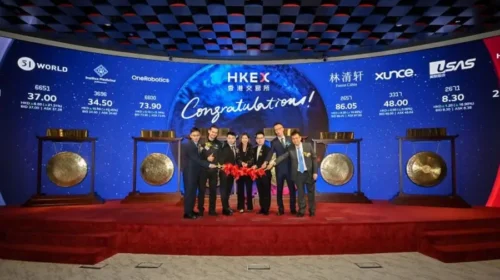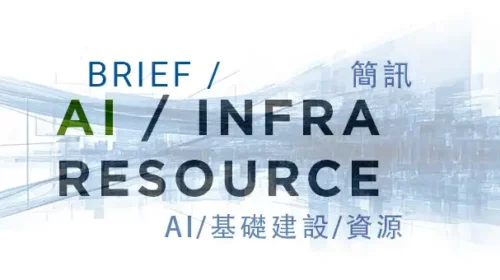Moore Threads taps China IPO investors as it faces challenges, opportunities

The GPU maker hopes to benefit from China’s drive to develop its domestic chip industry, as it navigates growing obstacles from U.S. sanctions
Key Takeaways:
- Moore Threads has filed for an A-share IPO, reporting combined losses of 5 billion yuan over the last three years on modest but fast-growing revenue
- The company hopes to become a leader in China’s GPU market, which is expected to grow tenfold by 2029 as domestic chips increasingly replace foreign imports
By Hugh Chen
It may be just five years old, but Moore Threads Technology is already looking to Beijing for more than $1 billion in assistance as tries to become an key Chinese supplier of the graphics processing units (GPU) that are central to powering AI applications. The high-tech chipmaker filed for an IPO on China’s A-share market last week, where it’s almost certain to attract interest from the country’s vast field of state-run investors eager to assist Beijing in the country’s quest for self-sufficiency in key technologies.
Moore Threads is, in many ways, a product of the billions of dollars that China is pumping into such key tech sectors. It was founded at the height of U.S. sanctions against China, the same year that Washington imposed sweeping bans on leading tech firm Huawei. Its founders believe the company could benefit from new opportunities for Chinese companies to sell products like GPUs, which now mostly come from foreign suppliers and are key for development of AI and other sophisticated computing applications.
Such ambitions come with their own risks, as Moore Threads found out in 2023 when it was subject to U.S. restrictions similar to those placed on Huawei. That action bars the company from manufacturing its products in partnership with companies like TSMC, a contract chip maker used by most of the world’s most cutting-edge chip designers to make their products.
In China’s policy-driven climate, companies like Moore Threads are receiving preferential treatment that allows them to list ahead of other firms that have often waited longer, reflecting Beijing’s desire to channel limited IPO funds to candidates in high-priority areas.
The company’s prospectus shows it aims to raise 8 billion yuan ($1.1 billion), a substantial amount that appears designed to capitalize on strong investor demand for anything AI-related, including makers of the AI chips. On the same day, rival MetaX also filed for a smaller IPO to raise 3.9 billion yuan, while Zhaoxin Semiconductor, a company focused on central processing units (CPU), also filed last month to raise 4.2 billion yuan.
Like many of its peers, Moore Threads was founded by former employees of leading global chip firms. Co-founder and CEO Zhang Jianzhong previously served as global vice president and China general manager of Nvidia (NVDA.US), whose status as the global leader in GPUs has transformed it into one of the world’s most valuable companies. Another co-founder, Zhang Yubo, was a senior architect at Nvidia’s U.S. operation.
According to corporate registration site Tianyancha, Moore Threads has raised at least 4.5 billion yuan to date through six funding rounds, though that list may be incomplete. Its investors include HongShan, formerly known as Sequoia China, as well as Shenzhen Capital Group, and internet giants Tencent and ByteDance. The company was valued at 25.5 billion yuan, according to a June report from local media Leifeng, which didn’t specify when it attained that value.
Mounting losses
Despite its relatively high valuation, Moore Threads’ youth is apparent in its modest, albeit fast-growing, revenue. The company generated just 438 million yuan last year, though that was more than triple the 124 million yuan for 2023, and light years ahead of its 46 million yuan in 2022, according to its prospectus. Meanwhile, its losses are massive but narrowing, falling from 1.84 billion yuan in 2022, to 1.67 billion yuan the next year and 1.49 billion yuan in 2024
Such losses are common among young chip companies due to the very high costs of GPU development. Moore Threads spent a combined 3.8 billion yuan on R&D in the last three years, including 1.4 billion yuan in 2024 alone.
The company develops chips for data centers, which are increasingly used to power AI applications. It also makes chips for consumer devices such as smartphones and PCs. While Moore Threads didn’t break down revenue by segment, data center chips are widely believed to contribute the majority of its revenue and represent the company’s primary focus.
Moore Threads has developed four generations of GPU products in its data center segment, including the latest S500, which the company claims is competitive with Nvidia’s A100 in some areas. While that looks less impressive since the A100 is five years old, it still makes Moore Threads among the most technologically advanced Chinese GPU developers.
Moore Threads believes the current environment will work to its advantage, dedicating significant space in its prospectus to explaining how Chinese localization policies will drive increased adoption of domestically produced GPUs. The company cited third-party research showing China’s data center and cloud GPU market is expected to grow roughly tenfold from 99.7 billion yuan in 2024 to 1 trillion yuan in 2029, with domestic products increasingly replacing imports.
Research from other companies supports such projections. Morgan Stanley said in a May client note that domestically made GPUs could generate 287 billion yuan in sales by 2027, capturing 70% of the Chinese market, up from 30% last year.
Moore Threads is hardly the only company hoping to capitalize on the shift to domestic production. Others jumping on the GPU bandwagon include heavyweights like Huawei, as well as mid-tier players such as Cambricon (688256.SS), Hygon (688041.SH), MetaX, Biren, Iluvatar CoreX, and Tencent-backed Enflame. Major internet companies have also launched their own chip units, including Alibaba’s T-Head and Baidu’s Kunlun.
Many of Moore Threads’ peers are also pursuing IPOs. In addition to MetaX, companies including Enflame and Biren have filed for the “tutoring process” that’s a requisite part of China’s IPO process. Reuters reported last month that Biren has shifted its focus to a Hong Kong listing after initially filing for an A-share IPO, partly due to stricter regulatory requirements on the Mainland.
A major challenge facing Chinese developers is U.S. sanctions like the ones Moore Threads faced in 2023, preventing it from producing its chips at the world’s most advanced foundries. Such steps have forced Chinese companies to compete for limited advanced manufacturing capacity at leading domestic foundry SMIC, whose own expansion is also being constrained by U.S. export controls on essential chipmaking equipment.
Moore Threads acknowledged that the U.S. restrictions have forced it to find domestic substitutions and take other measures. The company did not reveal which foundry it currently uses to make its chips, or whether it faces other manufacturing challenges.
A successful IPO would provide Moore Threads with the cash it needs to stay competitive, with much of the funds earmarked for R&D, according to the prospectus. Investors looking for profits anytime soon might want to temper their expectations, since the company warned that it “may continue to incur losses.” Still, such losses are unlikely to deter big state-backed investors, which are more likely to consider longer-term profit potential and helping Beijing to reach its policy objectives.
To subscribe to Bamboo Works weekly free newsletter, click here




